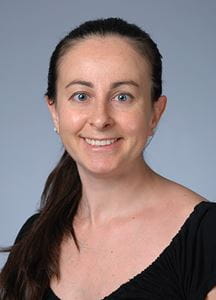Natascia Marino, PhD, assistant research professor of medicine at IU School of Medicine and a research scientist with the Komen Tissue Bank at the IU Simon Cancer Center, is among the authors of a study published online in npj Breast Cancer. Dr. Marino said the study demonstrates the importance of conducting research on the “normal breast” and that she and her colleagues were surprised by the role fat plays in the development of breast cancer. The study, according to Dr. Marino, provides researchers with an early clue into changes that lead to breast cancer. “For the first time, we will have a view into the earliest changes that lead to breast cancer,” she said.
She answered questions about the study.
In your words, what is the single main purpose of this study?
Our main goal is to understand what causes certain women to develop cancer in their breasts versus women who do not and how the breasts prone to cancer are different from those of healthy women.
What is the key finding?
We identified molecular alterations linked with increased processing of fat in the breast tissue of women two to six years before they had any diagnosis of breast cancer. This suggests that the breast with even a small number of cancer cells, still undetectable by current diagnostic tools, is different from a healthy breast and all the cellular components of that affected breast are working to create a surrounding favorable for cancer growth.
What is the significance of the finding?
We show the possibility to detect abnormalities in the breast associated with cancer before it is detectable by routine screening methods, like mammography. Moreover, we also suggest that the fat cells in the breast tissue may have a key role in promoting cancer by both providing energy to the cancer cells and by inhibiting the anti-cancer immune response.
What are the strengths of your study?
We are the first to look at the alterations occurring in breast tissue donated by women prior to their diagnosis of cancer and compare its features to breast tissue from healthy women. This study has been possible only because of the work of the Susan G. Komen Tissue Bank at IU Simon Cancer Center (KTB). The KTB has been collecting normal breast tissues from healthy volunteer women for the last 13 years and follows up with the donors about any change in their medical status.
Were you surprised by the results?
Yes, we didn’t expect that the fat cells, which were thought to have only a storage function, play such an important role in promoting cancer development. Further investigation is needed to understand how those fat cells are activated by either genetic or environmental factors (i.e., lifestyle, exposures to pollutions or hormones).
What are the implications of your findings? Are there clinical applications that can be applied in the next few years?
Our findings show the changes leading to cancer develop in the breast long before the cancer is detectable by routine methods. This work provides us with potential “targets” that can be modified to prevent cancer from happening.
